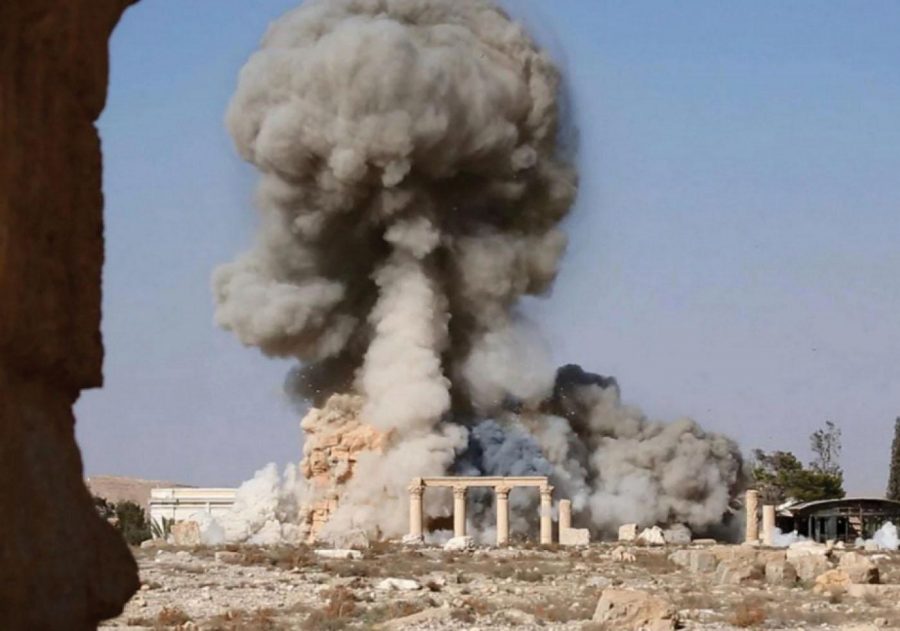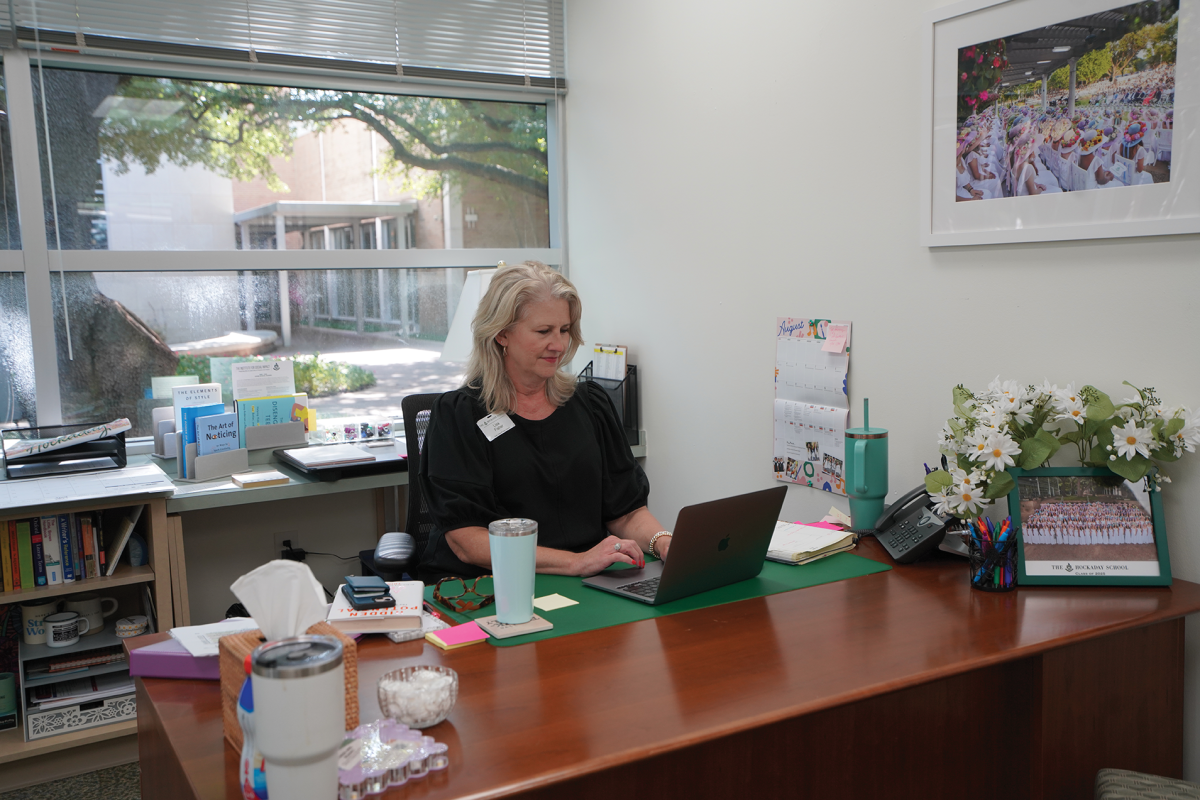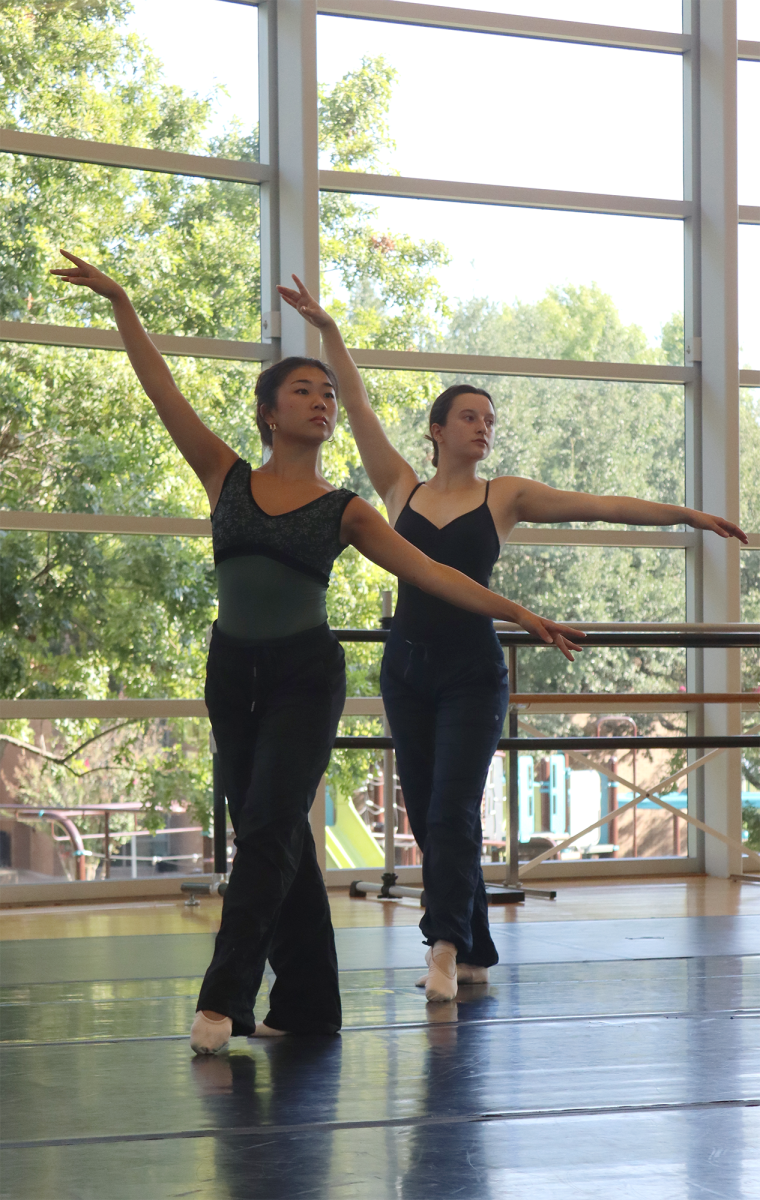As ISIS’s warpath expands in the Middle East, antiquities are destroyed
In September, ISIS committed a violent crime that only added to their list of atrocities. Beginning their destruction of the ancient Semitic city Palmyra, Syria, the terrorist organization began doing what all dictatorial regimes attempt to do: claim and control history.
During Fine Arts Lead Chair Ed Long’s career, he has watched how we view art transform. “Fifty years ago, hearing about people destroying a statue would be saddening,” Long said. “Now, in the age of social media, watching someone take an ax to a priceless statue is heartbreaking, because we are helpless.”
But these are not new techniques or isolated incidents. In the late ‘30s, Hitler looted and destroyed roughly 20 percent of Europe’s art, totaling about 21,000 works, 14 percent of which are still missing. The Khmer Rouge destroyed mosques and nearly every Catholic church in Cambodia during the late ‘70s. The Greeks wiped Troy from existence around 1180 B.C., defiling shrines and obliterating its buildings, erasing the Trojans’ religion. The Arabs torched the Library of Alexandria centuries ago, expunging the Egyptians’ accumulated studies.
Alumna Erin Simmons ‘10 works for the Institute for Digital Archaeology. While attending Oxford University in England for her undergraduate degree in archeology and anthropology, Simmons conducted her own fieldwork in Turkey and South America.
Now, she organizes logistics, contacts, field crews and background research for the Institute. Its goal is to compile one million 3-D images of at-risk cultural heritage sites and objects by the end of 2016 using modified 3-D cameras distributed to volunteers from non-governmental organizations, museums, government coalitions across Syria, Iraq, Lebanon, Turkey, Iran, and Yemen.
“What’s so terrifying about ISIS’s destruction is that it’s not one and done,” Simmons said. “The media treats [destruction] like a free-for-all, but it’s not. It’s a very blatant attempt to demolish a shared cultural history. If they just wanted to get rid of it, they could smash it all up without taking any pictures.”
ISIS occupied Palmyra in May and is destroying temples at a slow rate. Its goal is to stamp out anything against the “hijacked” Islamic ideology, especially monuments to the West like the Roman ruins of Palmyra. UNESCO, the U.N.’s specialized agency for securing the world’s cultural and natural heritage sites, has been putting in little effort to save these sites.
Anna Bottinelli Edsel was part of one of the last research teams in Palmyra before Syria became a hotbed for radical Islamic activity. Now, she is the Lead Researcher at the Monuments Men Foundation and has done field work in her native Italy, the United Kingdom, and Germany.
“The U.N. and UNESCO have spent years ‘condemning’ these sort of actions and expressing ‘outrage,’ but words are not enough,” Bottinelli Edsel said.
UNESCO has been described by many as a “complicated bureaucratic machine” that is not making any concrete change.
“The enduring crime of historical loss in Syria – and around the world– doesn’t end with its barbarity. It continues in our inaction, our silence, our forgetting,” Bottinelli Edsel said. “It continues if we allow the tragedy of Syria to fade into the oblivion of headlines and hand-wringing indecision at global conferences and United Nations gatherings.”
In the past, action has allowed for monuments and art to be saved. New York Times best-selling author, Robert Edsel, has been researching and writing about the Monuments, Fine Art and Archives program of World War II, which protected and retrieved civilization’s most important artistic and cultural treasures from armed conflict, dictators and destruction for 12 years. He emphasized what has been done in the past to protect cultural treasures.
“During World War II, it only worked because we had 3.9 million soldiers in Europe and the Monuments Men were an important part of that contingency,” Edsel said. “But we had the leadership, President Roosevelt and General Eisenhower, that understood the importance of the protection of cultural treasures and made that case to the public so there was public support for it.”
Government organizations are only now rediscovering the importance of protecting cultural treasures, because many have been lost due to time and destruction.
“Museums once said that they were only for real artifacts,” Simmons said. “But now that they are realizing that these artifacts are gone.”
Anita Difanis is the American Association of Museums’ Director of Government Affairs and recently spoke at Southern Methodist University on the association’s stance.
“We really can’t focus on the real objects anymore because they are gone or going and copies are the best thing we are going to get,” Difanis said.
The U.S. House of Representative’s Protect and Preserve International Cultural Property Act passed in the House on June 1 and a parallel bill is now being considered on the Senate floor. These bills place import restrictions on items coming into the U.S. from Syria and prevent stolen items from entering the States, while also providing sanctuary for threatened objects.
Congress is now trying to add to those protocols by granting asylum to jobless museum curators in those affected areas who are attempting to save those monuments and artifacts, like Khaled al-Assad, a renowned Syrian archaeologist who was publicly beheaded by ISIS in August for not revealing the hidden location of some ancient relics.
Thus far, ISIS has destroyed The Suq in Aleppo and the Roman ruins of Apamea, Syria. According to these experts, ISIS’s next target will probably be the Roman city of Baalbek in Lebanon.
“Those who murder want to erase a whole culture, so killing people is not enough. Destroying their art and culture is essential to achieve their objective. We all die,” Bottinelli Edsel said. “What makes [art] immortal is what we leave behind. Art is one of the things that human beings create and that stands as witness of the human genius. No people dies until its cultural heritage is also erased.”







